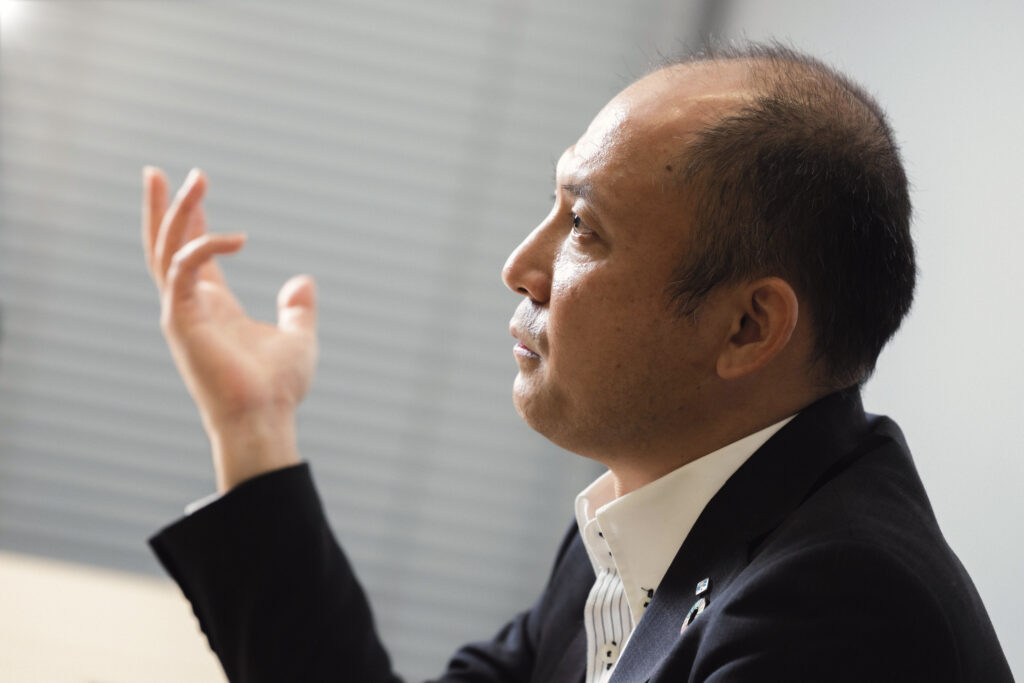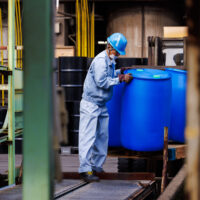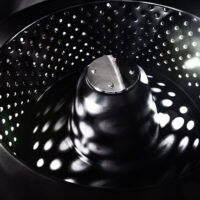
Full-scale launch of Manac’s Shonan Lab to develop original technologies and products / Aiming to identify needs and develop Manac’s technologies
Manac’s original technologies leverage bromine and iodine chemical reactions to produce chemical intermediates for the chemicals field. These technologies are supported by the technology development and experience cultivated by the Research Center within Manac’s factory located in Fukuyama, Hiroshima. With the increasing need for even higher added-value fine chemicals, particularly in the pharmaceuticals and electronic components fields, manufacturers of chemical intermediates are also facing a technological revolution. One year has passed since Manac established its Shonan Lab (Fujisawa City, Kanagawa Prefecture) in November 2020, where cutting-edge research on fine chemicals is rapidly advancing.
■ What you can learn from this article ✔ Manac’s Shonan Lab is conducting cutting-edge research in fine chemicals, with plans to commercialize technologies within three years. ✔ The Shonan Lab seeks to create a research cycle for its technologies by understanding the needs of other companies. ✔ Manac is advancing the recruitment of talented personnel by establishing a base in the Kanto region. ■ Recommended Articles ・ Cross-contamination prevention and IT adoption led by the Idea Man/ Projects to increase production capabilities for fine chemicals
contents
Onsite where cutting-edge research on fine chemicals is done for the pharmaceuticals and electronic materials fields
The Shonan Lab was established to develop our own original technologies and products. Currently, we are developing two technologies in the fine chemicals field: (1) Processes to synthesize target compounds highly selectively using microflow reactor technologies; (2) Reaction reagents used for peptide synthesis. Both represent areas of challenging leading-edge research for Manac.
We learned more from Research Center Chief, Mr. Katsumi Yamamoto.
“Many pharmaceutical manufacturers are interested in the fields of microflow synthesis and peptide synthesis, and these technologies can be applied to electronic materials manufacturers as well.”
Mr. Yamamoto explains that as the Fukuyama Research Center, Manac’s main lab, is dedicated to projects commissioned by other companies, it was difficult to create an environment conducive to firmly focusing on developing original technology.
“The two subjects that we are currently researching are areas we had been considering since the two researchers were part of the Fukuyama Research Center. These technologies will certainly be useful in the future. I would like to realize the Shonan Lab goal of developing original technologies and products by leveraging the original technologies we have cultivated so far at Manac. Since the research we are taking on is highly cutting-edge for us, this goal will likely take around three years to accomplish, but we are making great progress so far.”
Identifying the needs of other companies through engagement
The Shonan Lab is located within Fujisawa City’s Shonan Health Innovation Park (widely known as Shonan iPark). Shonan iPark was first established as the Shonan Research Center in 2011 by Takeda Pharmaceutical Company, which later opened the center as a science park in 2018. Shonan iPark has since become a center of industry-academic-government collaboration, including between many companies and universities. The park site spans 220,000 square meters with a total of 310,000 square meters of laboratory floor space, which hosts more than 120 organizations, including pharmaceutical companies, medical/AI-related startup companies, venture capitals, universities, and government agencies.
The park features spaces for dining and drinking as well as lounge spaces available to use freely. Park operators also work to create opportunities for engagement between park members, holding seminars available to all park members, as well as lunch meetings and regular informal events.

Manac has come to see that many of the companies who are members of the park are also potential future clients of Manac.
As Mr. Yamamoto explains, “We can gain an understanding of the challenges and needs of other companies through the interactions our Manac researchers have with them. The subjects we take on as commissioned research are clearly defined areas of client needs. However, with regard to the areas of our company’s research, if we cannot identify, on our own, the needs of companies (clients) and apply our original technologies to establish our own areas of research, we will not be able to contribute toward solving challenges in society, nor can we expect to grow as a company. We’d like to create this kind of ‘cycle of launching research from needs’ at the Shonan Lab.”
Although engagement between park members continues to be limited due to the COVID-19 pandemic, Mr. Yamamoto believes that “engagement will flourish as the situation with the pandemic improves.”
Aiming to increase research bases and gain talented personnel
In addition to Manac’s main lab in the Fukuyama Factory and the Shonan Lab, Manac’s research bases include the Toyama Lab (Takaoka City, Toyama Prefecture), which develops compounding functional materials, and the Gobun Lab (Fukuyama City, Hiroshima Prefecture), which researches new flame retardants agents and materials. While we establish research bases in each region to create environments that allow us to focus and dedicate our research on our own technologies and products, as mentioned earlier, there is one more important reason behind this.
When seeking to increase Manac’s research centers, Mr. Yamamoto first looked to rental labs in the Kanto (eastern) and Chubu (central) regions of Japan. It was just then that he came across Shonan iPark, complete with its experiment facilities for synthesizing organic compounds, and so it was there that he decided to create a new lab. Mr. Yamamoto explains further.
“The Shonan Lab was also established as a way to employ talented students who will then hold the future of Manac. Up until then, we mostly hired students in western Japan since Manac’s production base is located in Fukuyama. By having bases in the Kanto region, we hope to create more opportunities for Manac to become better known among the many students who were unaware of Manac before.”
Moving forward, Mr. Yamamoto says that he is considering increasing personnel transfers between the Fukuyama Research Center and the Shonan Lab, as well as increasing the number of personnel at the Shonan Lab.
“Fukuyama is a very nice place to live, so most tend to not want to leave. However, personnel in Fukuyama naturally devote their time to commissioned research, which is directly tied to our company’s business performance. This meant researchers would usually have no choice but to put off further deepening their own areas of research. With the establishment of the Shonan Lab, it is my hope to achieve an environment that allows researchers to delve into research with creative ideas in order to develop original Manac technologies and products, while also allowing Manac to acquire new talented researchers.”
Two of our younger researchers assigned to the Shonan Lab are advancing cutting-edge research while also gaining knowledge and expertise from our highly experienced researchers in Fukuyama through online meetings.
Over the next two articles, we will cover the cutting-edge research on fine chemicals that the two younger researchers are advancing at the Shonan Lab. These articles are scheduled to be released in the middle and end of November 2021.















